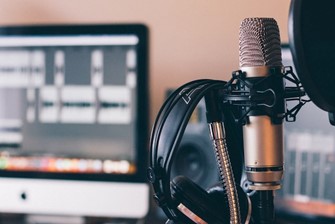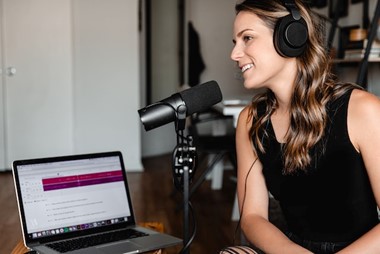
Hoping to share some thoughts or insights with the world in the form of a podcast? It’s a fantastic dream to have, and one that many people have now turned into their own “dream come true”. However, for those just getting into the podcast medium, Misha Solodovnikov informs that reading a guide to getting started with podcasting is essential.
To get started, be sure to have the proper gear assembled, like microphones, and get familiar with a chosen recording software. Afterward, the success of the podcast will rely on choosing the best practices for formatting and building an audience through consistency and recognition.
In the following article are three of the major steps in getting started with podcasting, as well as more details on how applying these techniques can increase success.
Initial Steps to Get Started
Getting just about any dream off the ground is difficult and overwhelming until someone thoroughly understands how to take the first step. After this, gaining momentum to create an interesting, informative podcast becomes more and more manageable. Below are three of the first steps needed to get started.
- Compile the Required Gear
- Pick the Best Formatting Practice
- Build an Audience
More details are below on how to put each of these steps into practice so that creators can stop preparing and start producing with as much efficiency and success as possible!
Compile Gear
It stands to reason that the best podcast needs the best gear behind it! Having the correct equipment can streamline the recording and posting process, as well as help to create content that is high quality for the pleasure of listeners.
Some of the most basic gear can include:
- A Microphone – USB microphones can simply plug into a computer and are easy to use, especially if an individual is creating a one-person podcast. Higher-end microphones can include XLRs, which pick up less feedback in a recording space that isn’t soundproof. Content creators will need a mixer for this as well though, so keep that in mind!
- A Headset – If you’ve used Skype or even Zoom to make video calls, chances are that you have a headset or pair of headphones lying around that will work just fine for recording podcasts. Be sure not to use any soft-shell (outer foam) headphones, because they could cause noise that the microphone may pick up.
- Recording Software – The best recording software will provide creators with the opportunity to enhance their voice and the sound effects used for the podcast, and it can also provide the most basic access to cutting out undesirable noises.
Choose the Best Formatting Practice
The format of podcasts has to do with the organization of the content in the show. These can be an interview podcast where a guest is invited to join each episode, a monologue podcast providing insight and information about personal interests or expertise, or a co-hosted podcast, where the host and their colleague or co-host record dialogue about a topic.
Selecting the overall topic of the podcast, such as pop culture, sports, politics, etc., can be the most important part of keeping an audience engaged.

Build an Audience
Finally, the best way to get and keep a podcast popular is to build an audience and following. The most effective tool for doing this is consistency. Once a content creator has decided on a format, a release schedule, and a topic, they must stick to it rigorously! If the need arises, pre-record several episodes so that they can be released on a consistent basis, even if your own schedule is inconsistent.
The target audience is more likely to gain interest in the podcast when launching interesting topics, and will come back because they enjoy the feel and style of the show. Moreover, an audience will stay when the information is consistent, along with the releases and formatting.
In Conclusion
In summary, getting started with podcasting is all about preparing with the utmost efficiency so that when it is time to record, creators will have no trouble building an audience and reaching success.
As long as podcasters have the proper equipment, such as a powerful computer, high-speed internet, a camera and microphone, and noise-cancelling headphones, the podcast creator will surely be able to produce high quality recordings and content.
All that’s left is to choose what format works best for the target audience and get recording. Building an audience will certainly take time and a commitment to consistency, but once these initial steps are achieved, launching a successful podcast is in the bag.

